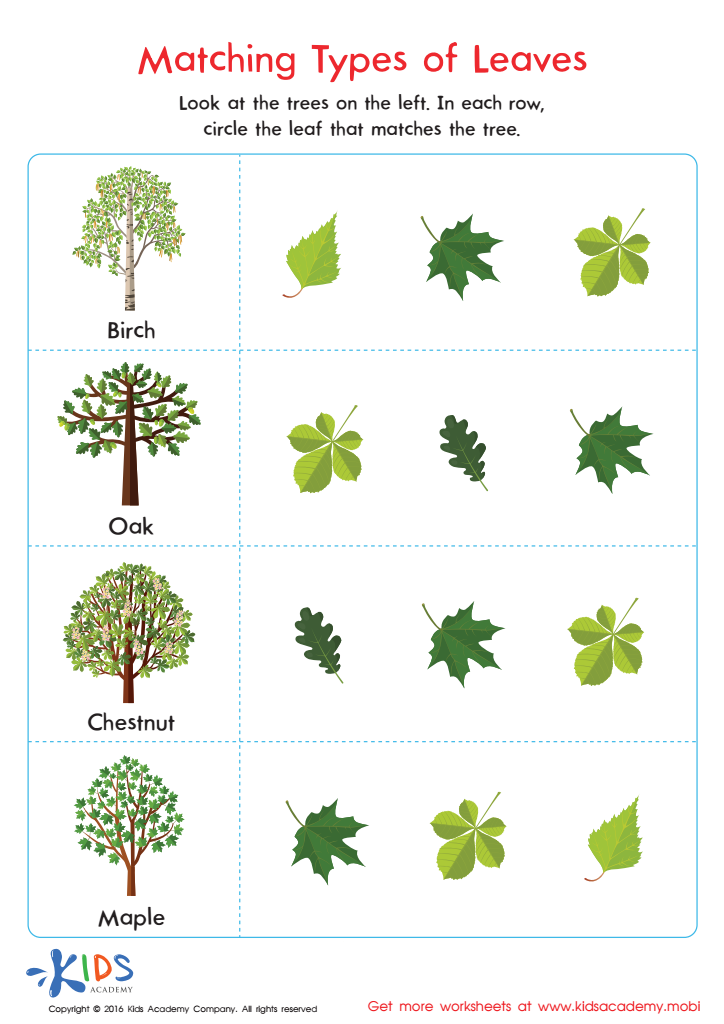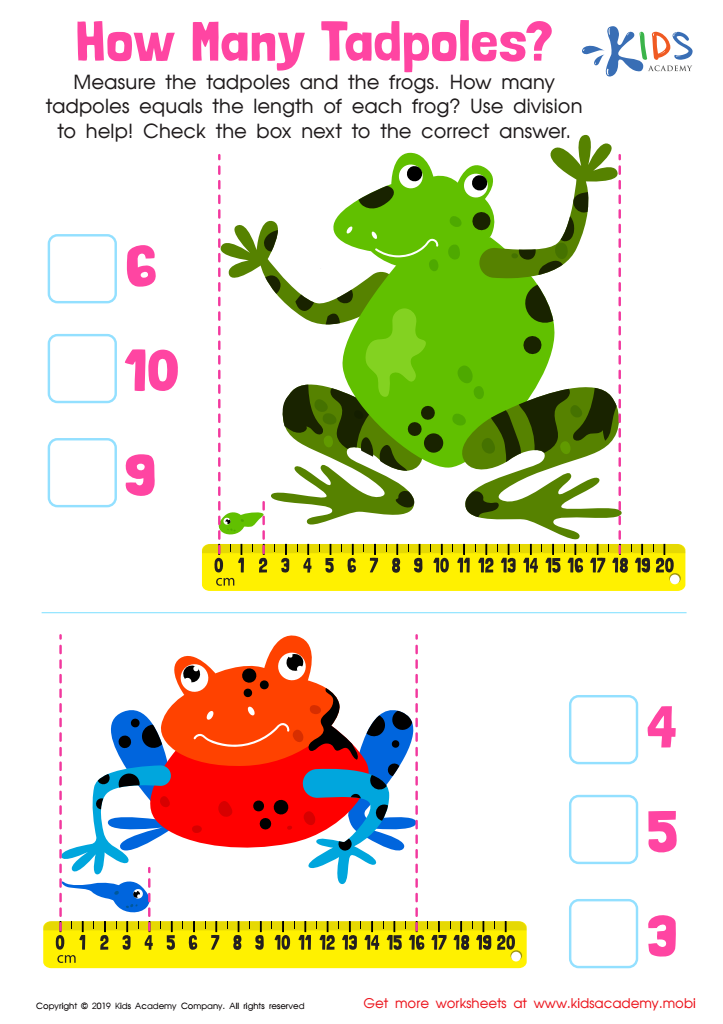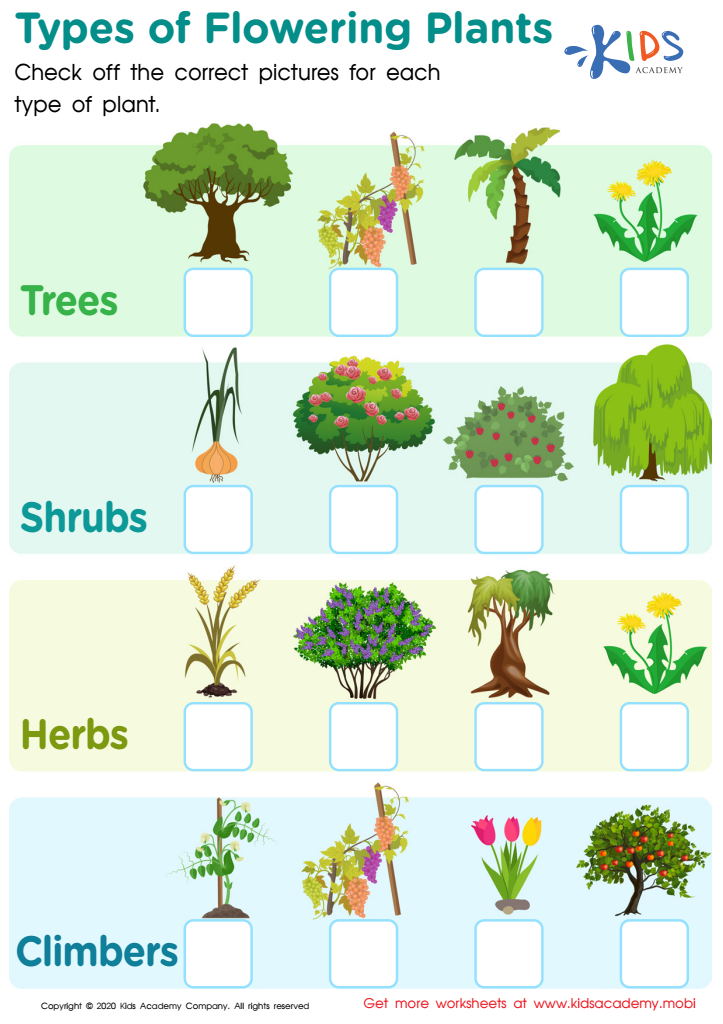Observation skills Normal Plants and Animals Worksheets for Ages 6-9
3 filtered results
-
From - To
Enhance your child's observation skills with our engaging "Normal Plants and Animals Worksheets" designed for ages 6-9. These carefully crafted worksheets promote critical thinking and curiosity about nature through fun activities focused on the characteristics of plants and animals. Kids will enjoy exploring their environment, identifying various species, and making careful observations, all while developing essential skills for scientific inquiry. Perfect for home or classroom use, these worksheets encourage a love of learning and foster an appreciation for the natural world. Unlock your child's potential today and watch them discover the wonders around them with our enjoyable, educational resources!


Matching Types of Leaves Printable


How Many Tadpoles Worksheet


Types of Flowering Plants Worksheet
Observation skills are fundamental for children aged 6-9, particularly in the natural world of plants and animals. Developing these skills enhances critical thinking and curiosity, essential attributes in a child’s cognitive development.
When children learn to closely observe plants and animals, they engage with their environment in a meaningful way. This engagement helps to foster a sense of responsibility and connection to nature, encouraging children to ask questions about the world around them. Understanding the characteristics of local flora and fauna promotes biodiversity awareness, laying the foundation for environmental stewardship.
Moreover, observation skills are integral to science education. They enable children to gather and analyze data, make predictions, and draw conclusions—key components of the scientific method. By observing, children learn about patterns, life cycles, ecosystems, and animal behavior, enriching their scientific vocabulary and comprehension.
Parents and educators should prioritize these skills to nurture well-rounded, inquisitive learners. Activities like nature walks, gardening, or setting up simple experiments create rich learning experiences that connect academic knowledge to real-world observations. Ultimately, fostering observation skills in the natural world not only stimulates intellectual growth but also instills values of empathy and respect for living beings. This foundational understanding informs their roles as active, informed citizens in the future.
 Assign to My Students
Assign to My Students














